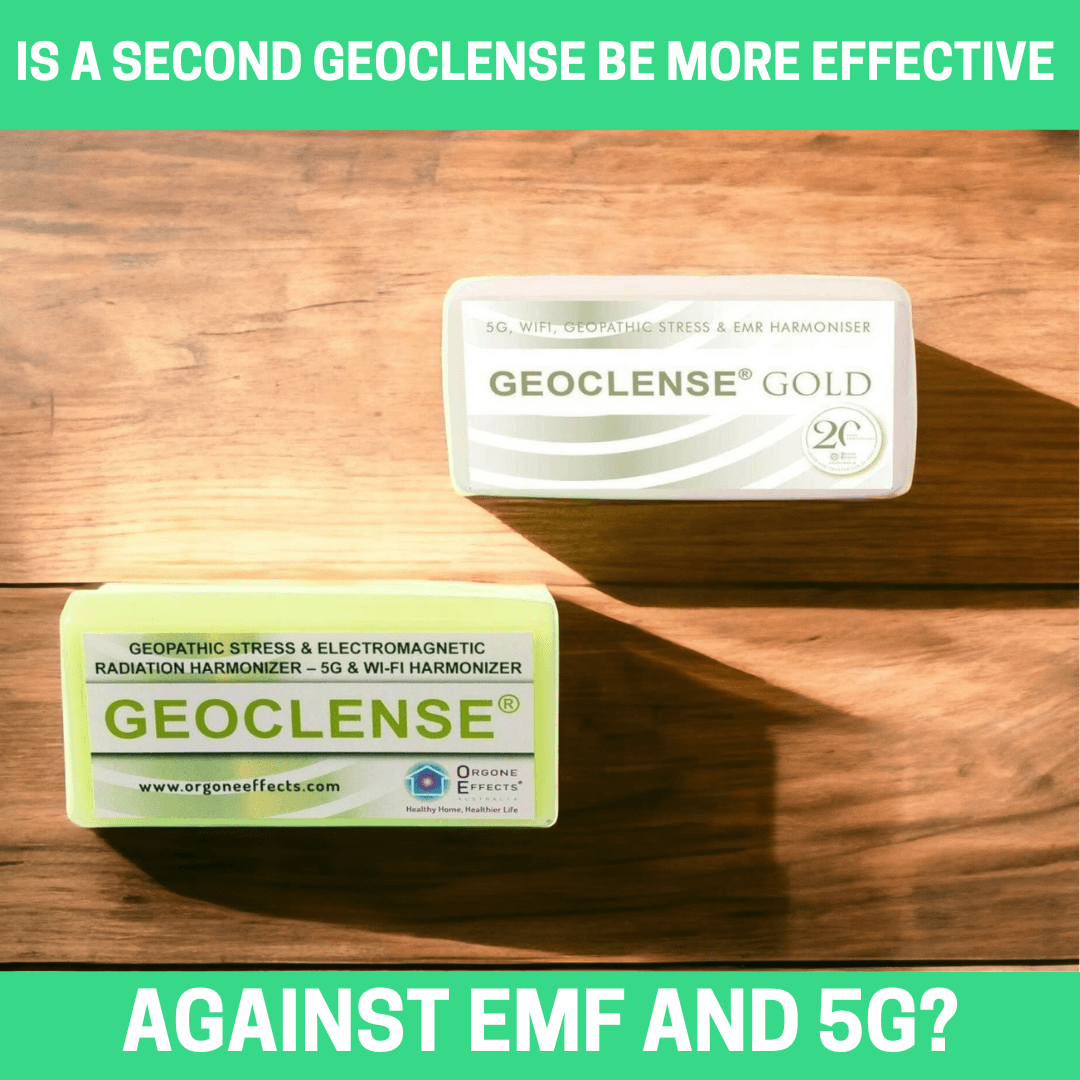In an era dominated by technology, concerns about the potential health effects of electromagnetic fields (EMFs) have gained prominence. So what states can Americans escape to in order to reduce their risk? Check out our states with the lowest EMF exposure.
Electromagnetic fields are produced by the interaction of electric currents and magnetic fields, generated by various electronic devices and power lines.
While the scientific community is still debating the long-term health implications of prolonged exposure to EMFs, some individuals are actively seeking environments with lower EMF levels.
Let’s explore the states in the United States that are believed to have the lowest EMF exposure and the factors contributing to their relatively low electromagnetic radiation levels.
What is EMF Exposure?

EMF exposure refers to the exposure to electromagnetic fields emitted by various electronic devices and equipment.
These fields consist of different types of radiation, including extremely low frequency (ELF) radiation from power lines and electrical appliances, and radiofrequency (RF) radiation from wireless communication devices such as cell phones, Wi-Fi routers, and Bluetooth devices.
Potential symptoms of EMF exposure may include headaches, sleep disturbances, fatigue, and difficulty concentrating.
Some individuals may also experience dizziness, skin rashes, or tingling sensations.
To protect oneself from EMF exposure, it is important to reduce the use of electronic devices, especially those that emit RF radiation, and to keep a safe distance from sources of EMF, such as power lines and electrical transformers.
Additionally, using wired connections instead of wireless ones, using EMF shielding products, and using devices with lower emission levels can help reduce exposure.
What Are The Risks of EMF Exposure?

In today's technology-driven world, the reliance on electronic devices has increased the level of exposure to electromagnetic fields (EMF). This has raised concerns about the potential health risks associated with prolonged exposure to EMF.
As a result, it is important to understand the various risks and potential health effects of EMF exposure.
Health Effects of EMF Exposure

Exposure to electromagnetic fields (EMFs) has been tentatively linked to a range of health effects. Research suggests a potential link between EMF exposure and various symptoms and conditions.
These health effects may include sleep disturbances, headache, depression, fatigue, lack of concentration, and nausea.
Studies have also suggested associations between EMF exposure and conditions such as childhood leukemia, brain tumors, and neurological disorders.
Some individuals may experience symptoms when exposed to EMFs, such as tingling or burning sensations on their skin. Other reported symptoms include dizziness, irritability, muscle aches, and memory problems.
While research on the health effects of EMF exposure is ongoing, it is important to acknowledge that not all individuals may experience these symptoms, and the potential risks associated with EMF exposure are still not fully understood.
It is essential to be mindful of our exposure to EMFs, particularly from sources such as cell phones, Wi-Fi, and power lines.
More research is needed to better understand the potential health effects of EMF exposure and to develop guidelines for minimizing any potential risks.
Cancer Risk

Several epidemiological studies have been conducted to investigate the potential link between mobile phone use and cancer risk.
Case-control studies led by the Hardell group suggested an association between long-term mobile phone use and increased risk of brain tumors, especially for ipsilateral exposure (on the same side of the head as the tumor).
These findings have led to concerns about the potential carcinogenic effects of radiofrequency electromagnetic fields emitted by mobile phones.
Further research is needed to clarify this issue and to better understand potential long-term health effects of mobile phone use.
Neurological Effects

Exposure to radiofrequency EMF has been linked to potential neurological effects, with some experimental and epidemiological findings suggesting a possible association.
Symptoms reported in some studies include headaches, dizziness, fatigue, and sleep disturbances, which can affect overall wellbeing.
Additionally, cognitive function may be impacted, with some evidence suggesting changes in memory, attention, and reaction time.
One study discovered that RF-EMF exposure brought about substantial modifications to various neurophysiological mechanisms, as evidenced by EEG studies on humans and molecular and biochemical findings from animal experiments.
Another study called for caution and lower EMF exposure levels to protect from the possible oxidative stress caused by EMF exposure, which can trigger neurodegeneration.
Further research is needed to better understand the potential risks and mechanisms of action related to EMF exposure and its impact on neurological function.
Sources of EMF Exposure

EMF exposure can come from both natural and human-made sources. High-frequency EMFs, also known as ionizing radiation, are emitted from sources like cosmic rays, radon, and radioactive substances in the earth.
These types of EMFs have enough energy to remove tightly bound electrons from atoms, creating ions, and are considered potentially harmful.
Low to mid-frequency EMFs, on the other hand, are non-ionizing radiation and are emitted from sources such as power lines, electrical wiring, appliances, and wireless devices.
This type of EMF may not have enough energy to ionize atoms but can still affect the body in various ways.
Non-ionizing radiation includes extremely low-frequency EMFs and radiofrequency radiation.
Extremely low-frequency EMFs are emitted from power lines, electrical wiring, and electrical appliances, while radiofrequency radiation is emitted from wireless devices, cell phones, Wi-Fi routers, and microwave ovens.
Examples of devices and equipment that emit EMFs include cell phones, laptops, Wi-Fi routers, power lines, and microwave ovens.
Potential symptoms of EMF exposure can include headaches, fatigue, difficulty concentrating, and insomnia.
It is important to be mindful of sources of EMF exposure and take steps to minimize potential risks.
Cell Phones and Wireless Devices

The federal agencies that have developed guidance and information on low-frequency, non-ionizing EMF include the Federal Communications Commission (FCC), National Institute of Environmental Health Sciences (NIEHS), and the Occupational Safety and Health Administration (OSHA).
These agencies have provided information on the potential health effects of low-frequency, non-ionizing EMF and recommended exposure limits.
Current research on EMF from cell phones and wireless devices has shown mixed results.
Some studies suggest a possible link between long-term use of cell phones and an increased risk of brain tumors, while other research has not found a clear association.
The International Agency for Research on Cancer (IARC) has classified radiofrequency EMF as "possibly carcinogenic to humans," based on evidence of a possible increase in brain tumors.
To reduce EMF exposure from cell phones and wireless devices, practical tips include using a hands-free device or speakerphone, keeping the device away from the body when not in use, and using it in areas with good reception to reduce the need for higher power levels.
At Orgone Energy we have shungite phone plates and Orgone Phone Protection Stickers to address EMF exposure.
Additionally, limiting screen time and using airplane mode when not actively using the device can also help reduce EMF exposure.
High Voltage Power Lines and Electric Power Lines

Living close to electrical lines poses several potential dangers to individuals and their property. One of the primary concerns is the electromagnetic fields (EMFs) emitted by power lines.
Prolonged exposure to high levels of EMFs has been associated with various health risks, including an increased likelihood of certain cancers, neurological disorders, and reproductive issues.
Additionally, there is a potential risk of electric shock or fire in the event of a malfunction or damage to the power lines.
Furthermore, property values can be negatively impacted as potential buyers may be deterred by concerns about health risks and safety.
As such, residents living in close proximity to electrical lines should be aware of these potential hazards and take appropriate measures to mitigate risks, such as maintaining a safe distance, staying informed about potential maintenance activities, and using EMF protection products in their homes.
Measures for Limiting EMF Exposure
In order to limit exposure to radiofrequency EMF, individuals can take several specific actions.
First, they can maintain a safe distance from EMF sources such as cell phone towers, Wi-Fi routers, and other wireless devices. However, with today's modern world, this is not often possible.
Second, using hands-free devices or speakerphone while talking on a cell phone can reduce the amount of radiation absorbed by the body. Additionally, limiting the use of wireless devices and turning off Wi-Fi routers when not in use can also decrease exposure.
In order to truly protect your family from EMF exposure, we suggest using EMF protection products. At Orgone Energy we have several options for personal and whole home protection such as our Geoclense.
What is Geoclense EMF Protection and How Does it Work?

Geoclense EMF Protection is a revolutionary device that offers a comprehensive solution to the harmful effects of EMF radiation and Earth Radiation. It is designed to create a harmonious living and working environment by neutralizing the negative energy caused by electromagnetic fields.
Using advanced technology, the Geoclense EMF Protection device emits a natural resonance field that counteracts the harmful effects of EMF radiation. It works by harmonizing the energy in your living space, revitalizing the water, and evicting dirty electricity. This powerful device also provides defense against the increasing prevalence of 5G technology.
Experience an 85% Reduction in EMF Radiation
One of the key benefits of Geoclense EMF Protection is its ability to reduce the effects of EMF radiation by up to 85%. This means that you can enjoy a significant decrease in the negative impact that electromagnetic fields have on your health and well-being.
Best States for Low EMF Exposure

Based on exposure assessment studies in Europe, the best states for low EMF exposure are those with consistently low to mid-frequency EMF levels, including extremely low frequency EMFs and radiofrequency EMFs.
Outdoor EMF levels in these states are typically lower due to limited exposure from power lines, cell towers, and other sources.
Indoor EMF levels are also lower, as these states often have strict regulations on electronic devices and infrastructure. When considering potential future risk analysis categories, these states are likely to remain low in EMF exposure due to continued monitoring and implementation of protective measures.
Overall, states with low to mid-frequency EMF levels and strict regulations regarding EMF exposure are the best for minimizing potential health risks associated with EMF exposure.
States with the Lowest EMF Exposure
Alaska: A Frontier with Limited Electromagnetic Pollution

Alaska, known for its vast wilderness and sparse population, is often considered a haven for those seeking lower EMF exposure.
The state's low population density means fewer electronic devices and infrastructure, contributing to reduced electromagnetic pollution.
Additionally, Alaska's unique geography and distance from major industrial centers result in a lower concentration of power lines and other potential sources of EMFs.
Wyoming: Embracing the Tranquility of the West

Wyoming, with its wide-open spaces and rural character, offers a relatively low EMF environment.
The state's commitment to preserving its natural landscapes has led to limited urban development and, consequently, fewer sources of electromagnetic radiation.
Wyoming's dedication to maintaining a balance between technology and environmental conservation contributes to its reputation as a state with low EMF exposure.
Montana: Big Sky, Low EMFs

Montana's vast landscapes and low population density contribute to its reputation as a state with minimal electromagnetic pollution.
The state's commitment to environmental preservation and sustainable practices further enhances its appeal to those seeking a low-EMF lifestyle.
Montana's residents and policymakers prioritize the balance between technological advancements and the state's pristine natural surroundings.
North Dakota: The Peaceful Prairie State

North Dakota's predominantly rural landscape and agricultural focus contribute to lower overall EMF levels.
The state's sparse population density and limited industrial development result in fewer electronic devices and power lines, reducing potential sources of electromagnetic radiation.
North Dakota's commitment to maintaining its agricultural heritage aligns with the goal of minimizing environmental impact, including electromagnetic pollution.
South Dakota: Where Serenity Meets Low EMFs

South Dakota, known for its iconic landmarks like Mount Rushmore and the Badlands, offers a serene environment with lower electromagnetic pollution.
The state's commitment to preserving its natural beauty and limited industrial development contributes to reduced EMF exposure.
Residents and policymakers in South Dakota prioritize maintaining the delicate balance between technological progress and environmental stewardship.
Factors Contributing to Low EMF Exposure

Population Density:
States with lower population densities often experience reduced electromagnetic pollution.
Rural areas and states with vast expanses of uninhabited land naturally have fewer electronic devices and infrastructure, resulting in lower overall EMF levels.
Geography and Topography:
The geographical and topographical features of a state can influence its EMF exposure.
States with varied landscapes and natural barriers may experience less electromagnetic radiation, as the terrain can limit the spread of signals from power lines and electronic devices.
Environmental Policies:
States with stringent environmental policies and a commitment to sustainable practices tend to prioritize reducing electromagnetic pollution.
Policies that limit the construction of power lines, regulate the use of electronic devices, and encourage environmentally friendly technologies contribute to lower EMF exposure.
Distance from Industrial Centers:
Proximity to major industrial centers plays a significant role in EMF exposure. States located farther away from densely populated urban areas and industrial hubs tend to have lower levels of electromagnetic radiation due to reduced concentrations of electronic devices and infrastructure.
Community Awareness:
States where residents and policymakers are actively aware of the potential health effects of EMFs may implement measures to minimize exposure.
Public awareness campaigns, educational initiatives, and community-driven efforts can contribute to a collective commitment to reducing electromagnetic pollution.
Is it Time to Move?

While concerns about the health effects of electromagnetic fields persist, some individuals are actively seeking environments with lower EMF exposure.
States with the lowest EMF exposure, such as Alaska, Wyoming, Montana, North Dakota, and South Dakota, share common characteristics such as low population density, geographical features, and a commitment to environmental preservation.
As technology continues to advance, striking a balance between technological progress and minimizing environmental impact will be crucial in creating environments with lower electromagnetic pollution.
Individuals interested in reducing their EMF exposure may find solace in the tranquil landscapes and environmental consciousness of states that prioritize a harmonious coexistence with technology and nature.






